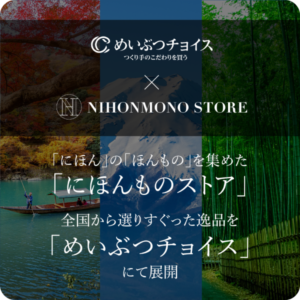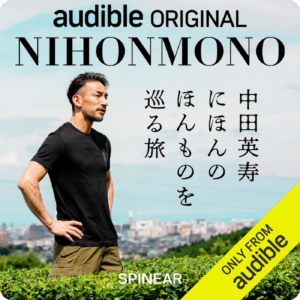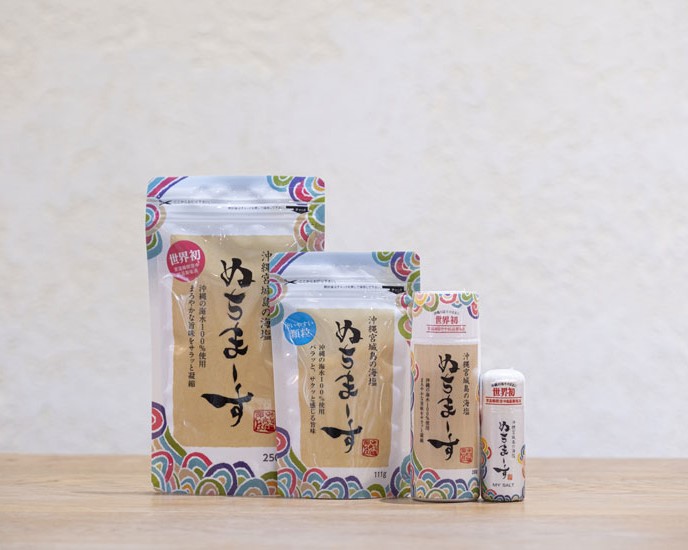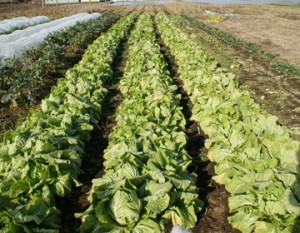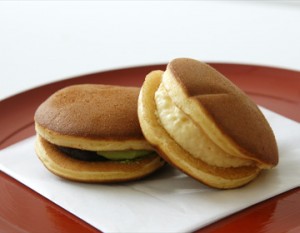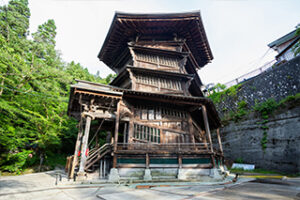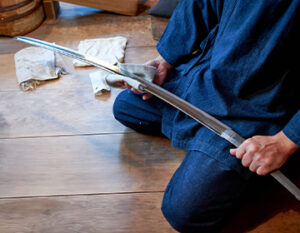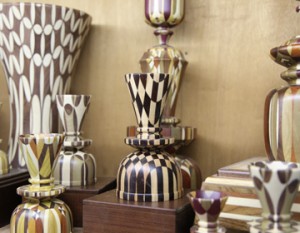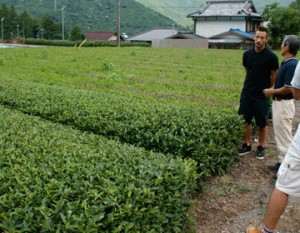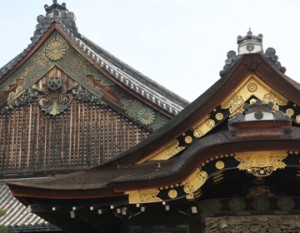Literally translated, it means “salt of life.” The sea salt “Nuchimasu” with this name is made in a factory on Miyagi Island, which is connected to the main island of Okinawa by a bridge. This nutritious salt is rich in 21 types of minerals. It has been 27 years since it was released, and it is now difficult to obtain this salt, but it is made using the same unique manufacturing method as when it was first released.
Natural salt made on a scenic hilltop
Miyagi Island is located in Uruma City, in the center of the main island of Okinawa. This small island is home to a salt factory, a shop, and a restaurant. Nuchimasu Co., Ltd., which can be found at the end of a gentle slope, has been making salt since 1997.
In Okinawan, “nuchi” means life and “masu” means salt. Nuchimasu’s representative, Takayasu Masakatsu, named it this way because he believes salt is so important that it can be said to be the source of human life. Nuchimasu is about 25% lower in salt than regular table salt, but instead contains 21 types of marine minerals. In particular, it contains 200 times more magnesium than regular salt. As soon as it goes on sale in stores and online, it sells out immediately.
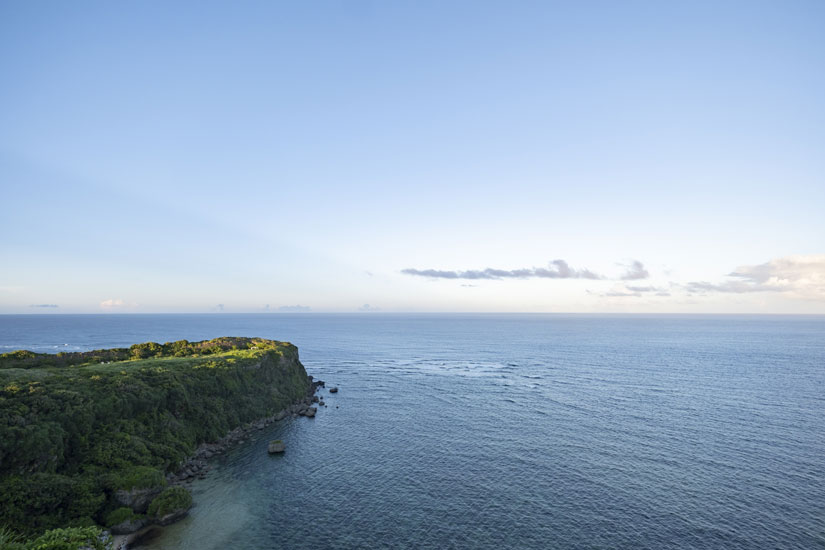
Within the factory grounds, there is a cape called “Kafu Banta” that is known as a scenic spot where you can get a panoramic view of the ocean, with its beautiful shades of vivid blue, like a painting, and anyone can visit. “Kafu” means “happiness” in the Okinawan dialect, and banta means “cliff, cape.” As its name suggests, the spectacular view is so beautiful that just looking at it brings a sense of happiness in both body and mind, and it is also popular as one of the most powerful spots in the prefecture.
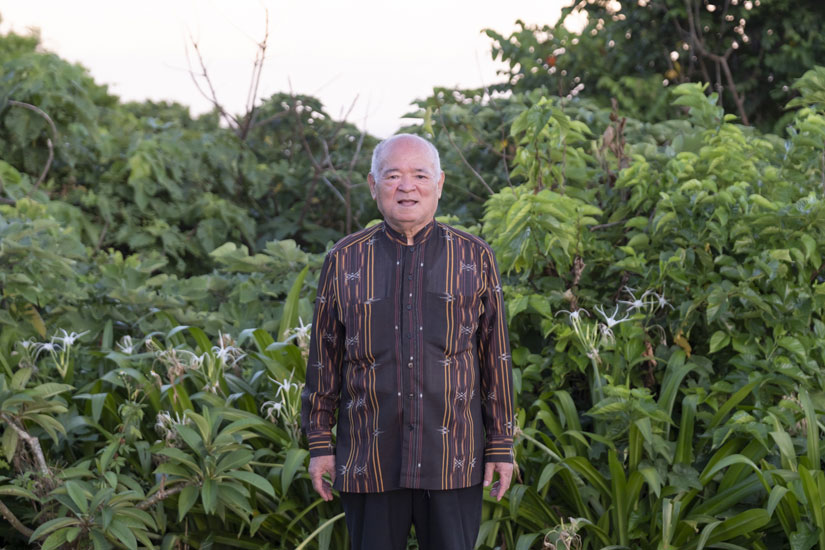
Takayasu has a factory close to this beautiful sea where he makes salt, but as a child, he wanted to be an inventor, influenced by the stories of great people his father told him every day. He went on to study physics at the University of the Ryukyus. While there, he studied biophysics on his own as a hobby, and said, “Because I had always studied how life was created, I immediately had an idea for how to make salt, which is essential for life. I realized that the salt I make can save humanity.”
After graduating from university, he worked as an engineer for an airline in Okinawa before starting to make salt, and then grew orchids. He developed a fine mist device that cooled the delicate orchids in greenhouses without damaging them, and used it in cultivation. The development of that device was later used in salt production.
When I saw the news about the liberalization of salt, I immediately came up with a method for making it.
In January 1997, news broke that salt was being liberalized in Japan. For about 90 years, salt had been sold by the government, but the salt monopoly system was abolished and anyone could make and sell salt freely. When Takayasu saw the news, he immediately came up with the idea of the room temperature instantaneous aerial crystallization salt production method. He could picture salt falling from the sky. He shivered when he realized that thanks to his studies in college, he had discovered that this salt would save humanity. Takayasu believed that this was the salt that would save humanity, but the public did not readily understand. He sought financing from financial institutions for about a year, but received no positive response. So he had no choice but to convert an orchid-growing greenhouse on the mountain into a room temperature instantaneous aerial crystallization salt production factory.
However, he was not able to immediately create a satisfactory machine, and after disassembling and reassembling it and conducting more than 100 experiments, he was finally able to create the machine that produced the salt he had envisioned.
Salt made using a unique method: instantaneous crystallization at room temperature
Nuchimasu is made using a patented method developed by Takayasu called the room temperature instant air crystallization salt making method. Pumped seawater is filtered and sprayed into a mist, and then hot air is applied to evaporate the water, instantly crystallizing all of the marine mineral components.
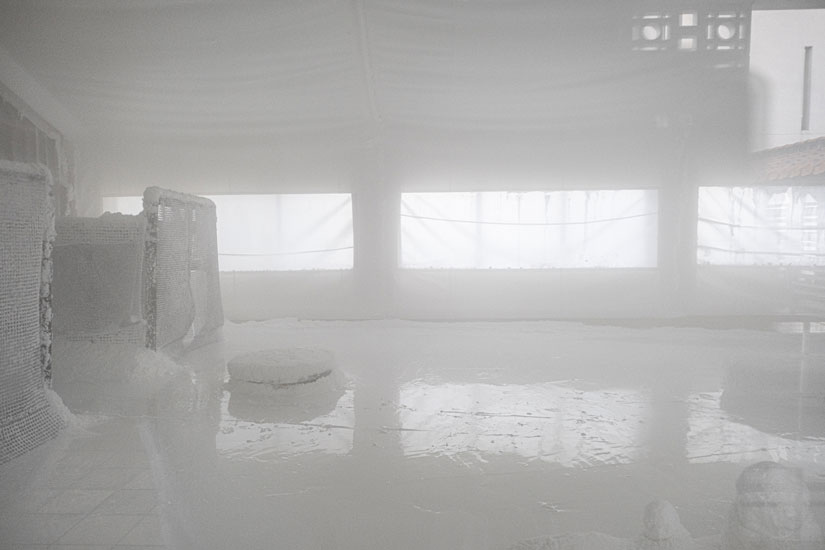
By doing this, salt is made that contains the same balance of minerals as seawater, including sodium, magnesium, potassium, and calcium. By eating salt with different ingredients at the same time as a meal, the flavor is enhanced and the taste is deepened.
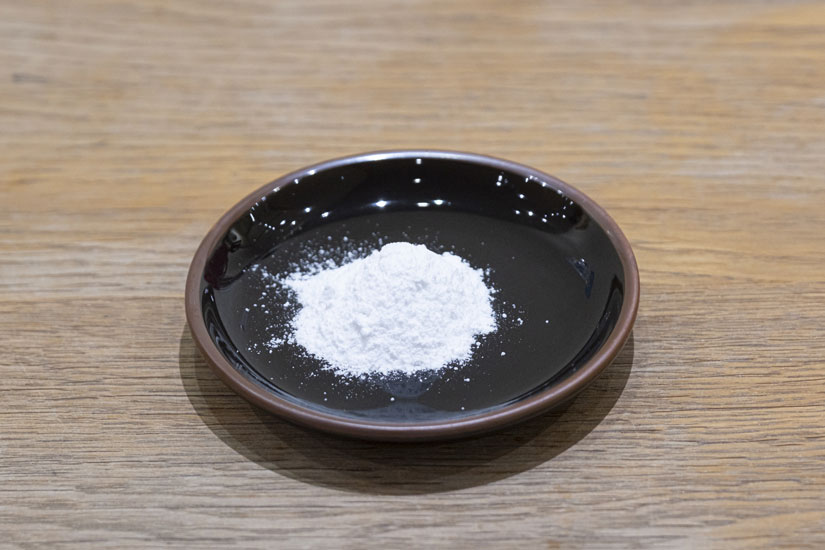
Nuchimasu is made only by drying the salt that has accumulated in the salt-making room. This produces a very fine, smooth salt. All salt is visually inspected, packaged, and then put through a metal detector before being put on display in the store.
Seawater is pumped up from the Pacific Ocean side of the factory. They say they chose this location after considering the effects of ocean currents, the possibility of human pollution in the future, and looking for a place without rivers. The ocean current in this area flows from south to north, and there are no islands or people to the south, so there is no possibility of future pollution. Furthermore, the seabed is bedrock, so the sea does not become muddy even during big typhoons. They found the perfect place, here on Miyagi Island.
In 2000, Nuchimasu was recognized by Guinness as the salt with the most minerals in the world, with 14 types. In 2003, even more minerals were detected, with 21 types of minerals. In 2009, the results of his research into the relationship between athletic function and minerals, as well as the preventive effects of lifestyle-related diseases, were recognized when he was awarded the Minister of Education, Culture, Sports, Science and Technology Award for “developing an ideal sea salt manufacturing method that overturns conventional wisdom about salt.”
“It’s important to have the ocean inside your body.”
Why are minerals so important to humans in the first place? Because minerals promote digestion in the stomach and intestines, and are responsible for the absorption of nutrients into the body. Takayasu says, “Keeping a lot of minerals in your body will keep you healthy. If you make your body the same as the sea, it will regulate all of your physical condition.”
There is also a case like this. A woman who suffered from severe menstrual pain took 15 grams of Nuchimasu every day, and the pain disappeared from her next period. “Before humans were born, all living things gave birth in the sea. Therefore, it is important that the amniotic fluid that fills the woman’s uterus, where the baby is grown, has the same composition as seawater.” I agree when I hear this.
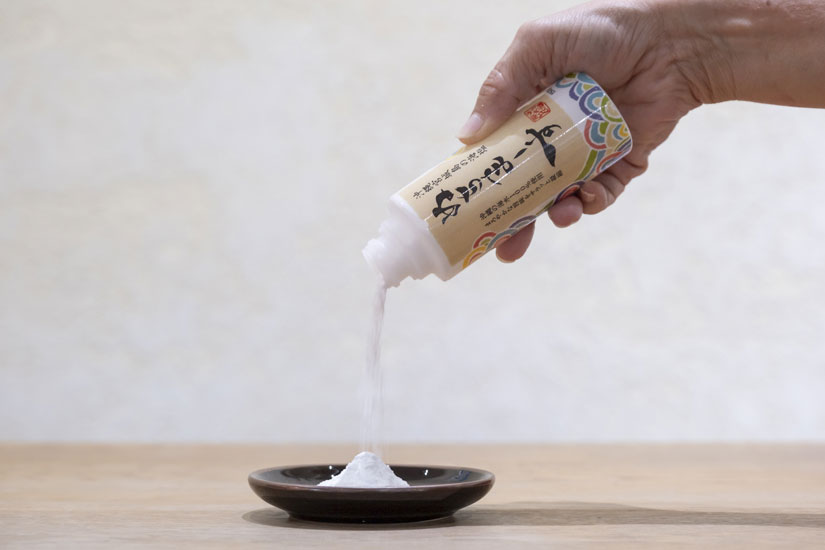
It is recommended that you take 15g of Nuchimasu every day. Potassium helps the kidneys flush excess salt into the urine. Nuchimasu also contains a lot of potassium, which helps to excrete waste and toxins, and even if you take 15g of it every day, you won’t develop high blood pressure. The salt that was previously sold as a monopoly is 99% sodium chloride, which can cause high blood pressure if taken in excess, but in the case of Nuchimasu, taking 15g a day is said to give you all the benefits of the minerals. In fact, when they tried taking 10g and 15g a day, they found that taking 15g was more effective against menstrual pain.
Long before humans were born, all life on Earth existed in the sea. Fish and other marine creatures take in seawater when they eat food. Although this is natural, people have not thought about taking something to replace the nutrients in seawater even when they start living on land. If they can take that properly, they can maintain the same physical condition as when they were living in the sea. Takayasu explains that this directly relates to health and prevents illness.
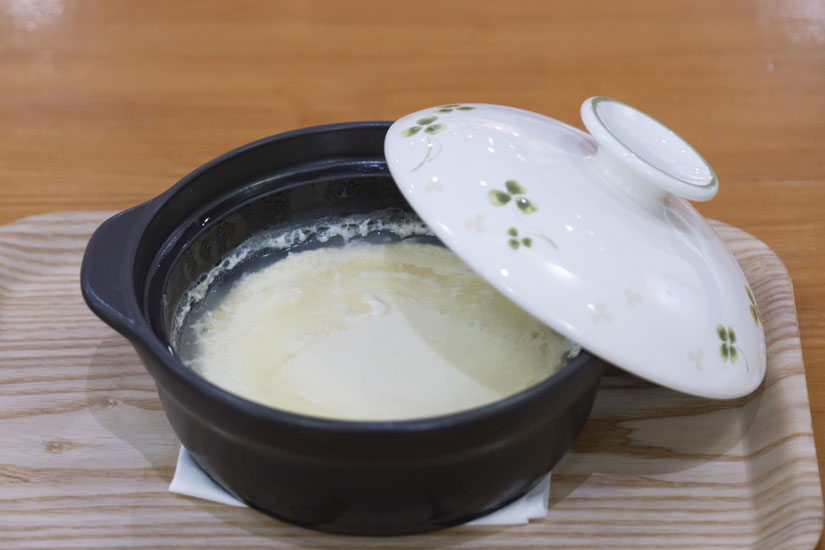
I was given tofu made simply by adding Nuchimasu to unsweetened soy milk. Normally, tofu is made by adding nigari to soy milk. Nigari is made up of magnesium, but Nuchimasu still has a lot of magnesium, so tofu can be made by simply adding a small amount of water with Nuchimasu dissolved in it to soy milk and stirring for a while. The freshly made fluffy tofu I was given had a mellow yet strong flavor, which seemed to indicate that it was packed with nutrients.

In the past few years in particular, the products they produce have been selling like hotcakes. They are currently upgrading their machinery to larger models and developing technology to make salt several times more efficient. They are also developing supplements that will make Nuchimasu easier to take while retaining its nutritional components.
Takayasu declares simply that “Nuchimasu can make people all over the world healthy.” This grandiose and passionate idea may actually be a very simple thing, a return to the origins of humanity.
It is with the sincere hope that the sea salt nurtured in the lush waters of Okinawa will protect the health of many people that pure white Nuchimasu is produced on Miyagi Island today.
